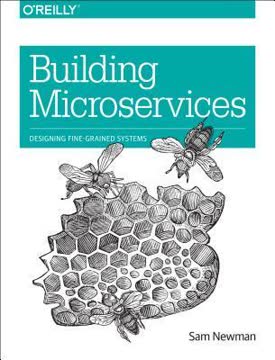Searching...
Top 10 Books on Architecture and Complexity
Explore 10 must-read books that delve into the intricate relationship between architecture and complexity, perfect for enthusiasts and professionals alike.
Book Summaries
How to Live in a World We Don't Understand
Nassim Nicholas Taleb's concept of antifragility offers valuable insights into how systems, including architectural ones, can thrive amidst chaos and complexity, making it essential for modern designers.
3 Key Takeaways:
- Embrace antifragility: Gain from disorder and volatility
- Avoid iatrogenics: Recognize when intervention causes harm
- Apply the barbell strategy: Combine extremes for optimal results
Alain de Botton's exploration of how architecture influences our emotions and well-being makes this book a profound read for anyone interested in the intersection of design and human experience.
3 Key Takeaways:
- Architecture shapes our emotions and behavior
- The pursuit of architectural beauty is complex and evolving
- Buildings communicate values and ideals through their design
John Maeda's exploration of simplicity in design offers valuable insights into how reducing complexity can enhance architectural beauty and functionality, making it a must-read for designers.
3 Key Takeaways:
- Simplicity is achieved through thoughtful reduction
- Organization creates order from chaos
- Time savings equate to simplicity
Robert C. Martin's guide to software architecture emphasizes principles that can be applied to architectural design, making it a valuable resource for understanding complexity in both software and physical structures.
3 Key Takeaways:
- Software architecture is about minimizing human resources and maximizing productivity
- Clean architecture separates business rules from external details
- SOLID principles guide the creation of flexible, maintainable systems
How Certain Schemes to Improve the Human Condition Have Failed
James C. Scott's critical examination of state-driven modernization projects highlights the importance of local knowledge in architecture and urban planning, making it a vital read for understanding complexity in societal structures.
3 Key Takeaways:
- High modernism seeks to impose order but often fails to account for local complexity
- Simplification of nature and society can lead to unintended consequences
- The power of local knowledge and practices often outweighs centralized planning
Designing Fine-Grained Systems
Sam Newman's insights into microservices architecture provide a modern perspective on designing complex systems, making it a valuable resource for architects in the digital age.
3 Key Takeaways:
- Microservices: Small, autonomous services that work together
- Evolutionary architecture: Adapting to changing requirements
- Modeling services: Defining boundaries and contexts
A Guided Tour
Melanie Mitchell's accessible introduction to complex systems provides essential insights into how architecture and urban planning can be understood through the lens of complexity science.
3 Key Takeaways:
- Complex Systems Exhibit Emergent Behavior from Simple Rules
- Information Theory Bridges Thermodynamics and Computation
- Chaos Theory Reveals Deterministic Unpredictability
Evolution, Complexity, and the Radical Remaking of Economics
Eric D. Beinhocker's exploration of complexity in economics provides a unique lens through which to view architectural and urban planning challenges, emphasizing the interconnectedness of systems.
3 Key Takeaways:
- The economy is a complex adaptive system, not an equilibrium system
- Traditional economics relies on unrealistic assumptions and fails empirical tests
- Human decision-making is based on inductive reasoning, not perfect rationality
Abby Covert's practical guide to information architecture provides essential strategies for organizing complex information, making it relevant for architects and planners dealing with multifaceted projects.
3 Key Takeaways:
- Identify the Mess: Recognize Information and People as Key Components
- State Your Intent: Use Language to Define Goals and Direction
- Face Reality: Confront the Complexities of Users, Stakeholders, and Context












